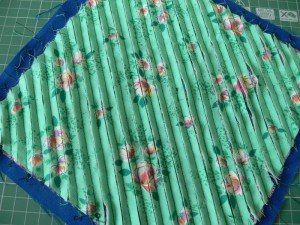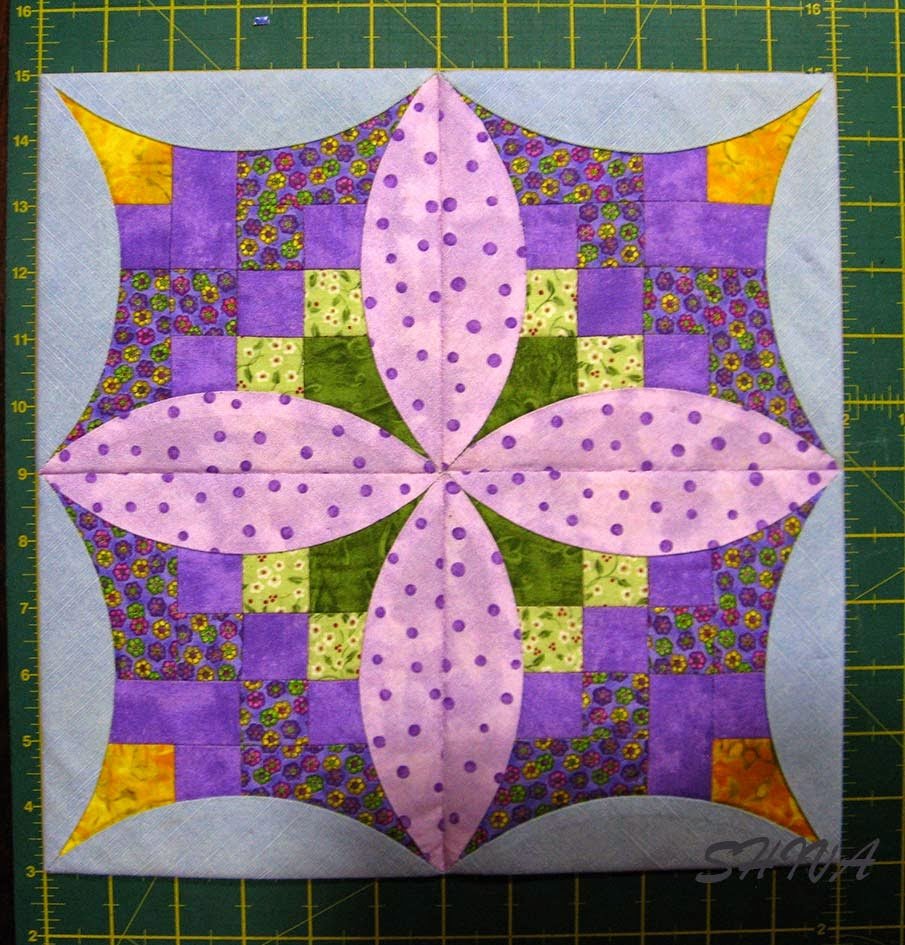Patchwork: video tutorials using different techniques and tips for beginners.
Every housewife has scraps of some material in her closet. And from them you can make a beautiful thing for use on the farm or as decoration. With the help of flaps you can master the skills of such wonderful art like patchwork. If you watch the video tutorials of patchwork sewing in different technique, then you can see that there are many ways to create beautiful things, so every craftswoman will find one suitable for herself.
The principle of creating things from pieces of fabric is simple; from its name you can understand that with the help of scraps of material you can make something new and original. Of course, there are a lot of styles for this sewing, so you can find a good and convenient option for yourself. For example, the chenille technique uses several layers of material, so it can be used to sew a blanket or bedspread. This technique will allow many flaps to be turned into the right thing for your home.
The most original and interesting sewing is patchwork in the crazy style. This technique does not require any skills at all to connect the flaps together; you can use shreds different shapes and colors, and from a large number of them you can even make a duvet cover. The end result should be a canvas of crazy color that will definitely lift your spirits.
When sewing, the material must be divided into several blocks to see if there is enough of it to create the desired product. These blocks must be laid out evenly and have the exact number of flaps. For example, when using the stripe sewing style, each patch block should contain the same number of strips of fabric. By the way, the stripe style is considered one of the lightest and beautiful styles, since you can sew a blanket using different colors of fabric, but the point is that all the patches should be sewn in an even strip. The strip can be vertical, horizontal or oblique, your choice.
Patchwork can be used to create new towels, potholders, sheets and bedspreads. There is no one direction in sewing; if you wish, you can use this technique in clothes. For example, for some funny party, you can sew skirts or pants from existing scraps to surprise your friends.

Also, many housewives make duvet covers for a baby blanket from pieces of fabric. After all, to create such a thing you don’t need a lot of scraps, unlike a duvet cover for adults. Therefore, every child whose mother is fond of sewing can see a cheerful and bright duvet cover or bedspread.
In the interior, patchwork can play the role of decorations or decorations; for example, patchwork can be used to sew a picture or a small carpet on the wall. You can also make various potholders, kitchen towels or pillowcases for decorative pillows.

Quick techniques such as quilting, quilting or patchwork are popular in quilting. With their help, sewing happens quite quickly, because the scraps are taken large, and usually they have the same shape - a square or a triangle. The quick squares technique is more convenient to use, since the squares are quite large, and all that is required of the housewife is to assemble a puzzle from the squares, which will be the pattern for the bedspread or duvet cover.
The bargello sewing technique is considered one of the most beautiful and complex, since when creating any interior item, you need to make many small squares, which will be sewn together so that the transition from one square to another will be carried out in the form of a wave. Contrasting fabrics are usually used to make the transition brighter and more noticeable. This technique is good for making thick bedspreads; you can also use lace on the sides of the bedspread.
The sewing technique in the Atarashi style resembles a kind of mosaic. For this technique, mainly squares are used; they must be connected to each other so that the pattern on the bedspread resembles a mosaic. To do this, you need to make many small squares and sew them together in such a way that you can see the mosaic pattern.
One of the most difficult techniques is stained glass technique sewing Patchwork in the stained glass style it is difficult to do, since the pattern on the bedspread must be made so that its parts resemble stained glass mirrors. For this type of sewing, you need to use multi-colored scraps and know how to use bias tape, since you will need it to create such a pattern.
Each sewing technique is presented in videos on the Internet, with the help of which you can clearly see the result. The video tutorials explain each step and show you how to work with the patches and the machine. Therefore, having many scraps of different fabrics and armed with the advice of real masters, you can begin to create your masterpiece.
There are a great variety of patchwork techniques, and in order to learn how to sew using these techniques yourself, you need to study master classes on handicraft websites and watch video lessons about patchwork sewing using different techniques.
Patchwork sewing is becoming very popular, because it is accessible to everyone, young and old. It allows you to turn unnecessary small scraps of used fabrics into a beautiful piece of furniture.
Chenille technique
This patchwork looks like multi-colored strips sewn onto any surface. Chenille is sewn from three parts:
- The bottom layer is the base on which the pattern will be attached;
- The middle layer is filler. For products made using the chenille technique, different fabrics are used as filler;
- The top layer is the front side of the product, the drawing itself.
When preparing the parts, the colors of the pattern, the density of the fabric, and the required volume of the pattern are taken into account.
When all the materials are ready, they need to be laid out in the correct order: the base of the product goes first, face down, then a layer of filler fabrics is laid out, and the facing fabric comes last. At the same time, the bottom layer should be five centimeters larger than all other layers on all sides.
The layers must be sewn obliquely at an angle of 45-30 degrees, but not along a longitudinal or transverse line. The lines are laid at the same distance from each other.
Now you need to cut through all the layers except the first. To do this, you need to apply markings with chalk or a special pencil: first, a line is drawn diagonally, and cutting lines up to two centimeters wide are laid from it. It is along these lines that the chenille should be sewn. After this, the fabric is cut between the lines.

This technique is perfect for decorating items in the interior and clothing.
Atarashi technique
This technique is otherwise called “Japanese fan”. As the name suggests, the technique has Japanese roots and is quite unusual.

Using this technique, just like in regular patchwork, fragments are first sewn together, which are then joined into blocks. Only these fragments are sewn in a special way:
First you need to make a stencil template. A 6x6 inch square is drawn and two diagonals are drawn inside it with an intersection point in the middle of the template. Using a compass, which is fixed at the intersection point, a circle is drawn. To get a good template, it is advisable to draw on thick cardboard. The circle must be carefully cut out;
You can draw a diameter in the center of the circle at an angle of 90 degrees - you will get two equal halves. If you make a template for four parts, then, perpendicular to the line already drawn, another one is drawn in the center - you get four equal slices;
Two semicircles are cut out of the fabric according to the size of the template, but with an allowance of approximately 1 centimeter;
It is advisable to wrap the template circle with thick foil - it will prevent the cardboard from softening when the fabric is wetted;
The semicircles are connected along the diameter of the template and stitched. Allowances also need to be swept away;
In order to fix the fabric well, you can use a glue stick or ordinary glue that does not leave stains;
Now you need to carefully smooth the allowances into shape. To do this, they are generously moistened with water and ironed until completely dry. You can use plain water or add a little starch to it - this way the workpiece will keep its shape very well;
After this, you can carefully remove the template from the workpiece;
Next, on the front side of the circle, using a marker, you need to draw a 6x6 inch square. The “ears” remaining behind the square will need to be folded along the sides of the square to the wrong side. You need to start from the corners, bend and iron carefully;

Now you need to prepare the fabric that will be sewn into the inside of the workpiece. Usually these are small colored patches sewn together. Synthetic winterizer is used as a filler.
The inner layer of the workpiece is placed under the “ears” and sewn on. The edges of the ears are sewn on by machine.
One piece is ready. To create a block, you need to make at least four such fragments.

This technique is very good for creating pillows and children's blankets, as the product turns out bright and will appeal to both adults and children.
Features of patchwork technique
Regardless of the chosen patchwork technique, the result will be amazing if you select the right fabrics and strictly follow the rules.
Beginners should start learning patchwork technique from the so-called fast technicians- they are the most understandable and easy to use. For example, “quick squares” - two identical strips of fabric are cut out different color. Then, from the third type of fabric, a strip is cut out in size equal to the total width of the two strips and sewn to both strips from different sides. It turns out to be something like a sleeve. Then the sleeve needs to be cut with a zigzag into isosceles triangles, which in the spread will represent squares.
You can combine two techniques, for example, quick squares and crazy-style canvas - you will get a very interesting and unusual product. Everything will depend on skills and imagination.
There is also such a technique as bargello - a technique of stitching strips of fabric that will ultimately represent squares descending in a wave.
Stained glass technique "patchwork" will allow you to create entire pictures on interior items, you just need to stock up necessary materials and patience.




